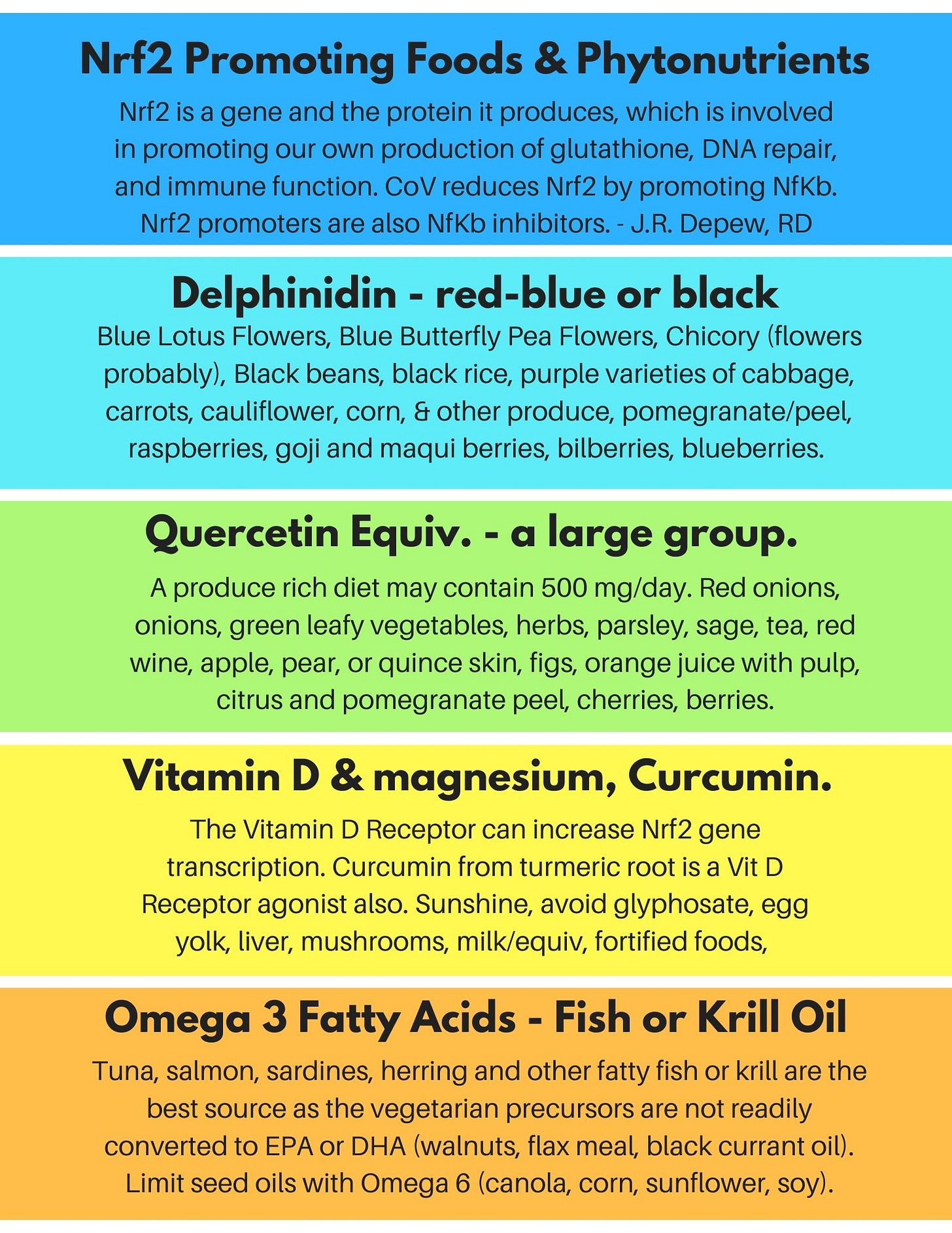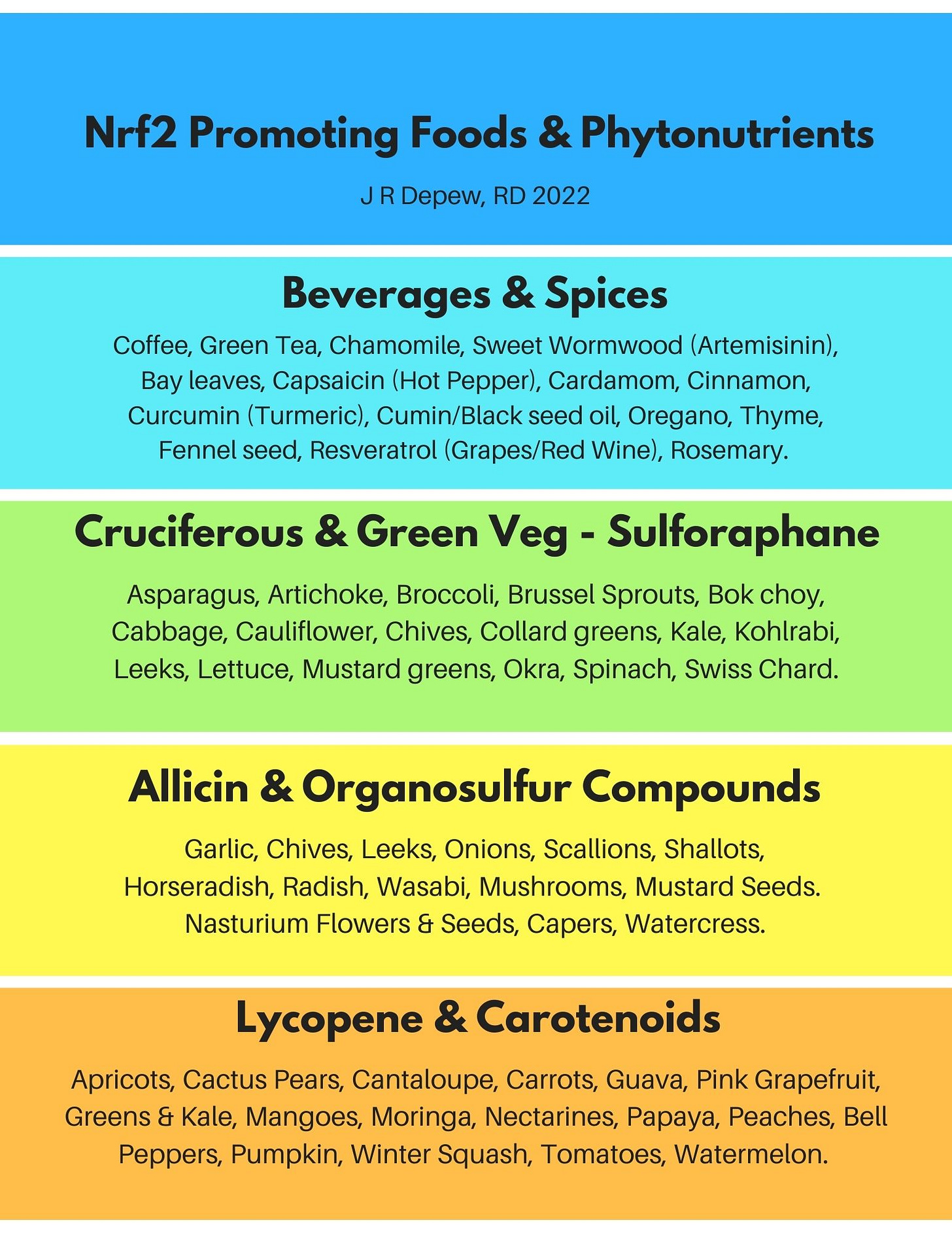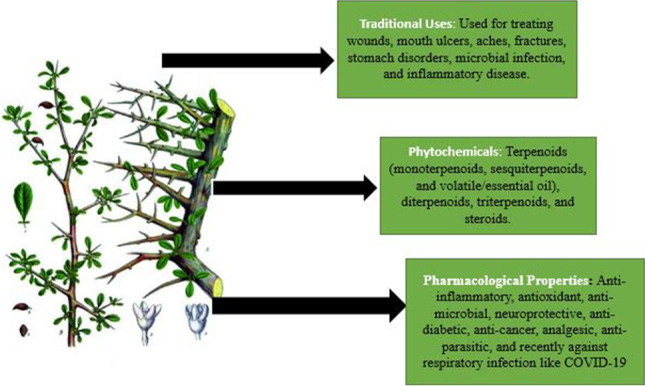Edible essential oils & why we benefit from using the fragrant gifts from nature.
Monoterpenes, sesquiterpenes and Phenylpropanoids, - a health reset for the better.
Some herbs are better sources of phytonutrients that have a protective effect against cancerous changes - but all plants are good sources because it helps protect the plant too. Harsh sun can cause DNA change from UV light in plants (Dinkova-Kostova 2008, Figure 1) or humans. Plants spend all day in the sun. So the violet smelling beta-ionone mentioned in this post about melanin, might be protecting the plant from too much sun just as it is protecting our skin from too much sun by promoting more melanin production and a better suntan.
DNA changes can lead to cancerous cells. Oxidative stress damage can be reduced by having plenty of nutrients to help protect the body. These include a need for plenty of magnesium, vitamin C, iodine, glutathione precursor amino acids, and B vitamins. Polyphenols and fragrant terpenes and other volatile aromatic chemicals have protective effects for us and for the plant.
Particularly powerful anti-cancer herbs include oregano and bay leaf, also known as Laurel leaves, were found most effective from a group of ten herbs that were tested against a precancerous cervical cancer cell line (Barrington and Lall, 2018) and oregano has been found helpful against breast cancer cell lines. (Al-Kalaldeh, et al, 2010)
Other herbs have more phytonutrients that help other types of problems. Nature gave us a way to tell them apart by aroma and the bitter flavors. When we feel sick, we can learn which plant helps to make us feel better and identify it by smell or taste. Taste and odor receptors act like functional machines throughout the body doing things like promote melanin production. They don’t just detect taste and smell in the nose and on the tongue. There are many receptors for bitter flavor throughout the body with functions that are largely still unknown. (25)
Great grandma may have known though, about the health benefits of Bitters, a digestive tonic that was commonly sold prior to modern medicine, that included aromatic, and probably bitter, herbs. (Wikipedia/Bitters) Some popular tonics might have been more alcohol than health aide but bitter citrus peel or herbal mixes could help health or digestion.
The bitter flavor is also very potent compared to other taste receptor types like sugar, sweetness.
The concentration of sugar/glucose needed to activate the sweet receptors would be much greater, larger amounts would be needed to activate a sweet taste receptor, compared to the amount of a bitter tasting chemical needed to activate a bitter taste receptor, Beta-ionone is a very potent aromatic chemical. Only very small amounts are needed to activate the odor receptor that it matches. A very low dose provides the violet aroma for the people with the genetics to smell it and a large dose would smell like pungent cedar wood to anyone.
Potency means dosing by taste can be more precise, too much tastes way too strong, pungent cedar wood, no violets anymore, and would likely be too much of a medicinal dose, and/or it might be. Thanks nature if that is the idea. Think of hot pepper, a little adds zing to a meal, too much can cause a burning nose or eyes or tongue if you overdid it.
Eating whole foods helps guide you to healthy foods in safe amounts. Taking herbal supplements can have unknown risks due to either human potential errors in quantity or quality of the contents of the capsule or tablet, or simply your physiology and the herb not matching well. Small amounts taken gradually, only one new thing at a time, can be a better way to test if new herb or foods kind of work well for you, or really isn’t a good fit for you and your personal body chemistry.
Nature may have worked out a partnership where the flavorful aroma, taste, and colorful appearance of plants helped to guide us to eat foods that are also healing. We survive with the healthy benefits of the tasty plant, and then we plant more of the crop, and it also survives, and as species we both continue to adapt to the beneficial partnership and we both survive into the future, hopefully.
Odor receptors and taste receptors are able to detect many specific chemicals. The odor receptors are more varied than the taste, much more varied. And so if we pay attention we can learn which aromas, along with which tastes, help with which types of aches and pains or moods. As we learn and pay attention to how we are feeling, we can also learn and pay attention to which strategies help us to feel better.
Strong tastes may help with dosing - some hot pepper (capsaicin) or black pepper (piperine), is good and a little more is too much or way too much. Both have medicinal benefits for the body at doses that would be very small amounts of the spice. While one phytonutrient may be thought to be the main chemical with medical action, such a piperine in the black pepper or capsaicin in the hot pepper, many whole foods contain a mixture of phytonutrients that all may act in slightly different ways, beneficially, within the body. The mixture of actions within the body may be more beneficial together, synergistically, an additive effect, than any one extract might have been as an isolated supplement. So the black pepper may have other terpenes also that help in addition to the piperine.
Anti-inflammatory foods and phytonutrients , and sunshine and exercise!
Other anti-inflammatory foods include, besides violets with beta-ionone, that promote the anti-inflammatory Nrf2 pathway and inhibit the inhibitory NF-kB pathway, include ginger, (zerumbone/gingerol), green tea, (EGCG/gallic acid), garlic, (aged garlic extract), Hops, (xanthohumol), which is happy news for beer lovers, that’s the herb used to make beer, and fish oil, the omega 3 fatty acids DHA and EPA. (de Paiva 2005) (Sun 2017) (Gupta 2010)
The female hormone estrogen is anti-inflammatory, and chemicals that act like it, called estrogen agonists, are also, which includes genistein from soy beans and resveratrol (Houghton 2016) from "grapes, wine, grape juice, peanuts, cocoa, and berries of Vaccinium species, including blueberries, bilberries, and cranberries." (lpi.oregonstate.edu) Agonists are chemicals that can activate a receptor, such as the estrogen receptor, while antagonists would inhibit or block the receptor. So the healing phytonutrients may be agonists for beneficial chemical receptors and inhibitors of inflammatory ones.
Food groups and phytonutrient groups that are particularly anti-inflammatory include many colorful fruits and vegetables. (G10.1, (Houghton 2016) Trying to add one more vegetable or fruit at meals and snacks may be a simple way to protect against long term risks of chronic stress and the resulting inflammation it can cause. Reducing inflammation can also help with chronic pain, improve energy levels and mood, act as an anti-anxiety and anti-depressant - so is getting out in the sunshine for some healthy exercise. [Excerpt from the Love & Forgiveness episodes of How Are You Feeling? transcript has links to the audio]

Essential oils or whole herbs and spices? Which is better?
That depends on what you want to use it for.
Essential oils are aromatic chemicals which are ‘volatile.’ That means they are small and evaporate readily into the air — where we can smell them. In the nose they are small and lipid based so they can rapidly diffuse across membranes of the four to five cells that separate our nose from a major nerve that goes straight into the emotional center of the brain and our Reticular Activating System, (RAS). The RAS pays attention for us and even while we sleep it can arouse us from sleep from an odor. This would likely be a survival trait. It would be protective if we smelled smoke in the middle of the night to be startled awake - or if we smelled a Saber Tooth Tiger and lived in prehistoric times.
Back to the point — essential oils can be extremely rapid at affecting our mood or health due to the rapid absorption through the nose (immediate or within minutes) or slightly slower affects from topical or edible use (within ~10-20 minutes or extended benefits over time).
However in cooking, extremely volatile chemicals are easily lost during the cooking or baking process. Essential oils are best used right at the end of food preparation or added individually at the table which can allow people to choose their own amount. The tongue helps guide us to the amount of a bitter nutrient or other types of nutrients if we listen to our hunger and fullness signals instead of eating rapidly. (*It takes 20 minutes for food to empty from the mouth to the stomach. If we eat too fast it can be easy to become overfull 20 minutes after we do stop eating from feeling a full stomach. The esophagus is still full at that point in time.)
Whole herbs and spices retain more flavor and infuse flavor more fully into a cooked dish. The Nrf2 promoting foods and herbs listed on the graphics would all be adding anti-inflammatory benefits to the diet. They contain beneficial water and fat soluble phytonutrients and a cooked food with water and fats might retain both types in the broth. Using whole herbs and spices in cooking seems to provide a more balanced and stronger flavor to my taste. However Essential oils are flavorful and fast and it can be a lazy way to better nutrition and better flavor.
Having blends diluted in a carrier oil can make it easier to add a complex flavor profile to individual servings of food or beverages. That also saves time opening all the single oil bottles and not opening the main bottle is better for preventing oxidation of the oil. I will add a post later with some edible blend examples.
Essential Oils, Cancer & The Blood Brain Barrier, blog by Deborah Stauss, original article by David Stewart, March 22, 2016, Link, via Pat from my Telegram chat group, thanks Pat! And thanks for the support for my mother from Pat and others here. Thanks everyone.
(Ramaroson, et al., 2022) Ramaroson M-L, Koutouan C, Helesbeux J-J, Le Clerc V, Hamama L, Geoffriau E, Briard M. Role of Phenylpropanoids and Flavonoids in Plant Resistance to Pests and Diseases. Molecules. 2022; 27(23):8371. https://doi.org/10.3390/molecules27238371 https://www.mdpi.com/1420-3049/27/23/8371
David Stewart shares three groups of chemicals found in essential oils that in combination can be very effective against chronic disease Sesquiterpenes, Phenylpropanoids which are precursors for many potent flavonoids like quercetin, luteolin, baicalin and caffeic acid, (Ramaroson, et al., 2022), and monoterpenes.
“Sesquiterpenes are compounds of three isoprene units, which is fifteen carbons and twenty-four hydrogens per molecule- molecular weight 204 amu. There are more than 10,000 kinds of sesquiterpenes. Sesquiterpenes are the principal constituents of Cedarwood (98%), Vetiver (97%), Spikenard (93%), Sandalwood (Aloes) 90%, Black Pepper (74%), Patchouli (71%), Myrrh (62%), and Ginger (59%). They are also found in Galbanum, Onycha, and Frankincense (8%).
Sesquiterpene molecules deliver oxygen molecules to cells, like hemoglobin does in the blood. Sesquiterpenes can also erase or deprogram miswritten codes in the DNA. Sesquiterpenes are thought to be especially effective in fighting cancer because the root problem with a cancer cell is that it contains misinformation, and sesquiterpenes can erase that garbled information. At the same time the oxygen carried by sesquiterpene molecules creates an environment where cancer cells can't reproduce. Hence, sesquiterpenes deliver cancer cells a double punch - one that disables their coded misbehavior and a second that stops their growth.
The American Medical Association (AMA) has said that if they could find an agent that would pass the blood-brain barrier, they would be able to find cures for ailments such as Lou Gehrig's disease, multiple sclerosis, Alzheimer's disease, and Parkinson's disease. Such agents already exist and have been available since Biblical times. The agents, of course, are essential oils - particularly those containing the brain oxygenating molecules of sesquiterpenes.”
https://mynewlifespa.com/blogs/news/93311169-essential-oils-cancer-the-blood-brain-barrier * this link copied a paper by someone else and added more about Frankincense from elsewhere. I found a different link with three blog type articles including this one by the author David Stewart, lensoils.com/tag/david-stewart/
More about Myrrh and sesquiterpenes is in this post:
Myrrh;
Myrrh resin is an ancient medicinal product that I tried as an essential oil. It seems to have nootropic benefits - mind clearing. Reduction in neuroinflammation is a reported benefit. It also has antimicrobial benefits and has shown potential against CoV. (
A link about the monoterpene Pinene was shared by Nattering Naybob in a comment on this post. Turpentine isn’t the only source of alpha or beta pinene. Pinene smells like pine trees but is also in dill, basil, parsley, and orange peel. It is potent against virus and other microbes, and helps reduce inflammation and calm anxiety. Alpha and beta pinene have slightly different properties and fragrances.
“While pinene is abundant in many strains of cannabis, it’s also present in pine trees and other conifers, orange peel, dill, basil, and parsley. Pinene is so prevalent in plants that researchers have identified around 200,000 varieties of this terpene. Because of how often pinene appears in nature, researchers have broken the compound down into two unique subcategories; alpha-pinene and beta-pinene, a-pinene, and b-pinene for short. […]
a-Pinene has shown amazing potential as an anti-inflammatory, bronchodilator, pain reliever, anxiety-reliever, and even a tool to battle short-term memory impairment. This terpene is so powerful that it’s used in drugs to treat kidney and liver issues as well! […]
There are few systems in the human body more important than our brains. That’s why when compounds like alpha-pinene show neuroprotective properties, people pay close attention. During early animal studies, researchers found that alpha-pinene specifically showed potential in battling Alzheimer’s Disease, dementia, amnesia, cognitive dysfunction, and overall memory loss. While the research in humans is still limited, the possibility of pinene and medications with high pinene content is huge.” https://leafwell.com/blog/pinene
Disclaimer: Opinions are my own and the information is provided for educational purposes within the guidelines of Fair Use and is not intended to provide individual health guidance.
Reference List
(Ramaroson, et al., 2022) Ramaroson M-L, Koutouan C, Helesbeux J-J, Le Clerc V, Hamama L, Geoffriau E, Briard M. Role of Phenylpropanoids and Flavonoids in Plant Resistance to Pests and Diseases. Molecules. 2022; 27(23):8371. https://doi.org/10.3390/molecules27238371 https://www.mdpi.com/1420-3049/27/23/8371







Great article and I’m going to have to read it again!
Another banger, Jen! TYVM for all you do on our behalf.
RE: bitter, I juiced some mandarins and left the peel on a couple. It was too bitter, so less peel next time.
>>Hops, (xanthohumol), which is happy news for beer lovers, that’s the herb used to make beer
Yes, sort of. I have friends who are pro brewers, so I know lots about it. Hop flowers are a flavoring ingredient used in many beer styles nowadays, but the original use was as a preservative / shelf-life extender. A long ocean voyage was necessary to supply goods from England to overseas colonies like India. The popular ales of the day were dark and heavy, well-suited to surviving the supply chain, but colonists and soldiers in tropical climates wanted a lighter, more refreshing style. The lighter ales didn’t survive the trip well, so brewers experimented with various preservatives, and settled on hops as the most cost-effective option. Bitter beer became very popular, and the style got called India Pale Ale (IPA). The bitterness also helped to prevent scurvy.
For some time I have had a sneaking suspicion that IPAs became and remain popular because folks instinctively know that bitter is good for us - within reason. Most of them are WAAAAY too bitter for my palate.